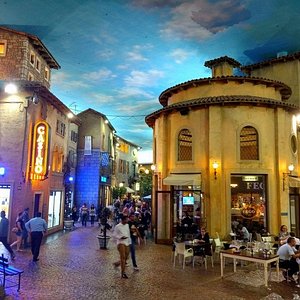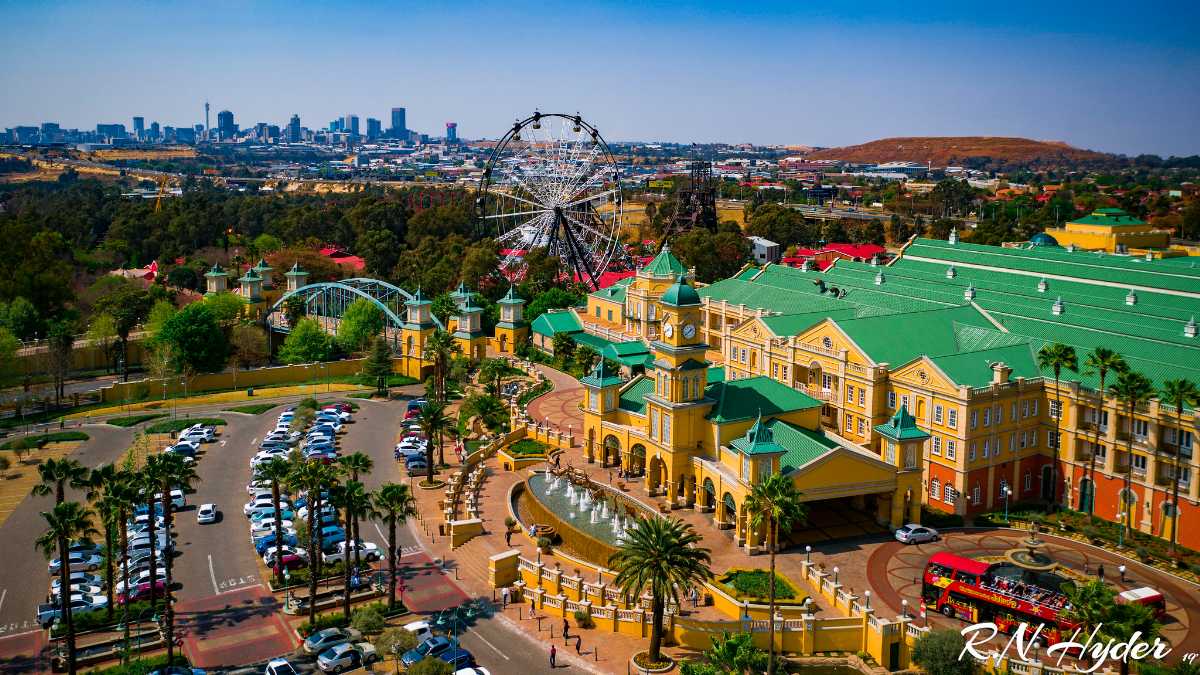The Greatest Guide To Johannesburg North Attractions
The Greatest Guide To Johannesburg North Attractions
Blog Article
The Basic Principles Of Johannesburg North Attractions
Table of ContentsGetting The Johannesburg North Attractions To WorkAbout Johannesburg North AttractionsThe smart Trick of Johannesburg North Attractions That Nobody is DiscussingHow Johannesburg North Attractions can Save You Time, Stress, and Money.Johannesburg North Attractions Things To Know Before You Get ThisUnknown Facts About Johannesburg North Attractions
The city owes its area to the visibility of a much more precious resource: gold. The city expanded on the side of the Witwatersrand Main Reef, a below ground stratum of gold-bearing quartz-silica empire that arcs for hundreds of miles under the Highveld. Most of the gold mines in the city stopped procedure in the 1970s, yet in its day the Witwatersrand gold industry accounted for even more than 40 percent of the globe's yearly gold manufacturing.Johannesburg has a pleasant environment. Summer season temperatures average regarding 75 F (24 C); winter months temperatures average regarding 55 F (13 C) and just periodically dip listed below cold. The city enjoys regarding eight hours of sunlight per day in both winter months and summer season. Rainfall averages regarding 28 inches (700 millimetres) per year, yet the complete differs substantially from year to year.
What rain the city obtains falls practically exclusively in the summer season months, typically in spectacular late-afternoon electric tornados., where numerous residents still count on coal for fuel.

Not known Facts About Johannesburg North Attractions
The balance of the city is occupied by whites. Accommodation differs in personality and top quality.
Physical development, although somewhat limited by transport, continued quickly as migration to South Africa, and Johannesburg specifically, boosted substantially. This trouble was resolved in the 1930s when the automobile was presented in mass production to South Africa. Automobiles were, essentially, confined to the wealthy, and permitted them to move to the north of the city and commute right into the centre.
A lot of poor suburbs were blended, with bad blacks and whites cohabiting, although the wealthy suburban areas were usually scheduled for whites. This transformed with the election of the National Celebration in the 1948 political elections, who began to formalise the system known as apartheid. Discrimination officially marked which residential areas each race could reside in under the Team Locations Act.
The previous system of eleven phoned number areas was reorganised in 2006. Marshalltown, as seen from the top of the Carlton Centre. The M1 and M2 run behind the buildings, and the southern suburbs prolong past the freeway boundary. The central city of Johannesburg is situated within the city's Area F. The number of people living in the inner city on an informal basis is unknown, as several are unlawful immigrants. The joblessness, education, and age profiles of the area are all unidentified, due to the trouble of getting dependable details concerning the location.
The 7-Second Trick For Johannesburg North Attractions
Centred on the CBD, the Bonuses area includes the residential areas of Yeoville, Bellevue, Troyeville, Jeppestown, and Berea to the east. To the west it spreads out to Pageview (Johannesburg North attractions) and Fordsburg. There are little commercial locations to the south, such as City West-Denver and Benrose. Around 800,000 commuters go through the central city every day, and it operates as a regional purchasing node for visitors from the southerly suburban areas. Yeoville and click for more info Bellevue have a mix of house buildings and single domestic units on little whole lots. The region is situated on a hilly divide that runs from eastern to west. The most noticeable geographic feature is Observatory Ridge, which is named for the huge observatory situated on it. The recreational spaces are no more used, as a result of safety and security problems.

Johannesburg Arena, a training school for both the Golden Lions and Orlando Pirates, is surrounding. The eastern suburbs of Johannesburg lie in the city's 7th [] and 9th [] areas. The area is additionally functionally incorporated with East Rand border towns beyond the official border of Johannesburg, such as Bedfordview and Edenvale (both part of Ekurhuleni Metropolitan District).
Johannesburg North Attractions Can Be Fun For Everyone
The eastern suburban areas are some of the oldest locations of Johannesburg, there are huge areas of Jewish and other European histories, the majority of the population is English speaking. There are 3 golf programs as well as a number of protected ridges with viewsites.
Originally built to house male migrant workers, several have actually been improved as residences for pairs and families. The residential area was not traditionally allowed to create work centres within the location, so virtually all important link of its citizens are travelers to other components of the city.
Johannesburg North Attractions for Dummies
The N1 Western Bypass attaches the north suburbs with the north-western suburban areas. The suburbs in the northern residential areas are primarily official, without any considerable areas of casual housing, or housing that does not have a permanent framework. This is a well established location, there is a pattern of land use modification from residential to business, especially along primary arterial roads and around well established nodes.
The location is well attached to roadway networks, especially along the north-south axis formed by the M1 and N1. Roadways to the east and west are much less well created, as there are no highways taking a trip because instructions. In the direction of the northern border of the city, the density of growth decreases, leaving large areas of undeveloped land around Midrand.
Getting The Johannesburg North Attractions To Work
, which is situated on a hillside ignoring the internal city and Hillbrow.
Report this page